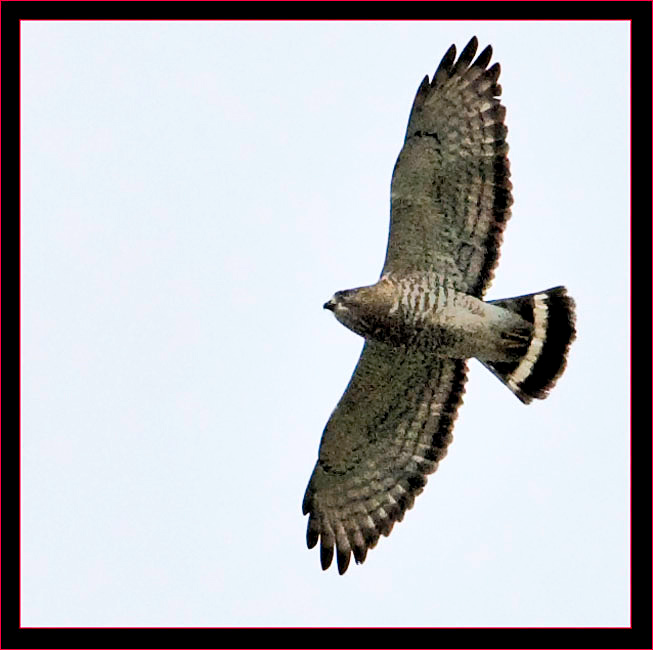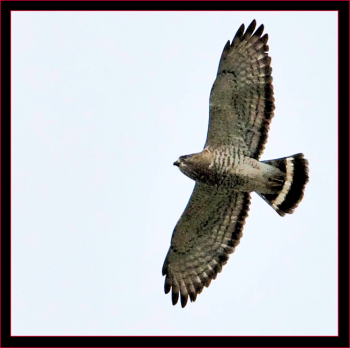Air travel is not for the faint of heart
The leaves are finally turning and the nights are getting cold—we even had to scrape the frost off the car windows last week — so we know that snow is coming sooner or later. The birds are way ahead of us, of course. The hummingbirds and ospreys left weeks ago, as did most of the warblers except the hardy yellow-rumped warblers that bless us with their abundance at this time of year. Most of the plovers and sandpipers have already passed through.
Many of these birds may not be here with us now, but we have been enjoying virtually staying with some of them through the marvels of satellite tracking projects. We wish we had some results of projects involving birds tagged here in Maine; in the meantime we have seen some very cool maps from birds tagged in other areas, including of some species that occur here in Maine. Broad-winged hawks are one of our most common summer nesting hawk species.
They are roughly crow-sized, with a short black-and-white banded tail. They can often be heard giving their high, whistled “pit-seee” call as they soar over the forest on a warm, summer morning. Broad-winged hawks have a widespread breeding range that extends from across southern Canada south through the eastern U.S. to the Gulf Coast. Colleague Erin Bayne in Alberta worked with the Smithsonian Migratory Connectivity Project this summer to affix satellite tags to three broad-winged hawks in central Alberta.
It has been fun to watch the routes of these hawks through the Migratory Connectivity Project’s online maps (http://www.migratoryconnectivityproject.org/livetracks) as they made their way south through the central U.S. to the Texas coast and joined the famous “river of raptors” streaming into Mexico.
In fact, only a few days ago the three birds moved through that famous raptor concentration point of Veracruz, Mexico, presumably along with tens of thousands of other hawks. It is easy to imagine the delighted birders and dedicated hawk counters enjoying the spectacle from one of the wonderful observation areas that are now available in and near Veracruz.
Another species that has been tracked this season with satellite tags are black-bellied plovers. Birders here in Maine have still been finding a few black-bellied plovers around, and the occasional bird will stay into early winter. But for most black-bellied plovers, Maine is a stopover location during a longer migration. Black-bellied plovers nest in the Arctic and winter from the southern U.S. south to South America. Birds tagged this summer at Colville River, Alaska, have been making their way south this fall through western Canada and then to the interior of the U.S. toward the Gulf Coast or Mexico’s Pacific Coast. One is already in Peru! You can also follow these birds at the Migratory Connectivity Project website.
The Canadian Wildlife Service has also been tracking black-bellied plovers; these were tagged at a Canadian High Arctic breeding site this summer (their routes can be seen at the website http://www.seaturtle.org/tracking). These black-bellied plovers have migrated south using a variety of routes, some of which have been closer to Maine. Several birds passed through the northeastern U.S. and are now in the Caribbean while two struck out over open ocean from Newfoundland.
One of these had made it to Brazil but, according to the map when we last checked it, the other was still several hundred miles offshore from the South American mainland. We sure hope it makes it!
Event Date
Address
United States
























